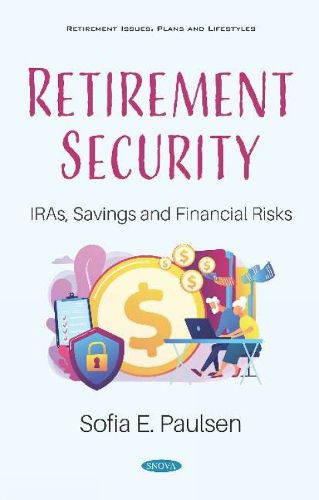Retirement Security: IRAs, Savings and Financial Risks

Retirement Security: IRAs, Savings and Financial Risks
In response to concerns over the adequacy of retirement savings, Congress has created incentives to encourage individuals to save more for retirement through a variety of retirement plans. Some retirement plans are employer-sponsored, such as 401(k) plans, and others are established by individual employees, such as Individual Retirement Accounts (IRAs). Chapter 1 describes the primary features of two common retirement savings accounts that are available to individuals. Chapter 2 examines Department of Labor’s process for granting exemptions for prohibited IRA transactions and outcomes of that process, and the extent to which DOL and IRS collaborate on oversight of prohibited transaction rules for IRAs. In response to an aging workforce, countries around the world have developed policies to encourage older workers to work longer to improve the financial sustainability of national pension systems and address shortages of skilled workers. Phased retirement is one option that can be used to encourage older workers to stay in the workforce. Chapter 3 examines the extent to which phased retirement exists in other countries with aging populations, the key aspects of phased retirement programs in selected countries, and the experiences of other countries in providing phased retirement and how their experiences can inform policies in the United States. Federal law encourages individuals to save for retirement through tax incentives for 401(k) plans and IRAs - the predominant forms of retirement savings in the United States. Federal law also allows individuals to withdraw assets from these accounts under certain circumstances. Chapter 4 examines the incidence and amount of early withdrawals; factors that might lead individuals to access retirement savings early; and policies and strategies that might reduce the incidence and amounts of early withdrawals. Chapter 5 reports on the number of households approaching retirement with low savings. As Americans age, family caregivers, such as adult children and spouses, play a critical role in supporting the needs of this population. However, those who provide eldercare may risk their own long-term financial security if they reduce their workforce participation or pay for caregiving expenses. Chapter 6 examines what is known about the size and characteristics of the parental and spousal caregiving population, including differences among women and men; examines the extent to which parental or spousal caregiving affects retirement security; and identifies and discusses policy options and initiatives that could improve caregivers’ retirement security.
This item is not currently in-stock. It can be ordered online and is expected to ship in approx 4 weeks
Our stock data is updated periodically, and availability may change throughout the day for in-demand items. Please call the relevant shop for the most current stock information. Prices are subject to change without notice.
Sign in or become a Readings Member to add this title to a wishlist.


